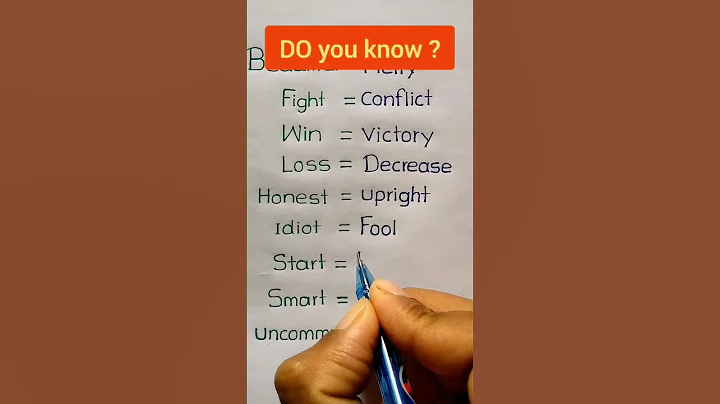Typos are a general term for typos and other words. Typos refers to words that are written incorrectly, while other words are used instead of words that should be written.
In the primary school learning stage, the appearance of typos shows a normal distribution trend, that is, as the grade increases, the number of literacy increases, the number of typos gradually increases, the middle grade, that is, the third grade, and the senior grade gradually shows a downward trend.

Reasons for children to write typos
Typos can be said to be "common diseases" and "difficult diseases" in primary school Chinese learning. They can basically be summarized into the following reasons.
Chinese characters themselves characteristics
(1) Complex structure
Chinese characters have different structures. The "Xinhua Dictionary" alone has collected more than 8,000 Chinese characters, and the different structural components are as many as 1,000 strokes. Among the 2,000 commonly used characters, each character has an average of 11 strokes, of which 221 characters with more than 17 strokes; each character has a small shape difference, one stroke, one stroke, one stroke, a little longer, or a shorter, and becomes a different character or not.
For example: "Not-shred", "Wine-spill".
(2) Homophones many
In Mandarin, there are more than 1,000 monosyllable homophones. If you ignore the tone, there are only 418 syllables in Chinese characters, and each syllable has an average of 733 common characters, and there are multiple sounds (tons) and multiple words in one sound.
For example: "Commemoration-Anniversary", "Performance-Department", etc. are all caused by the same or similar meanings.

psychologic reasons for primary school students
(1) Perception is inaccurate, analysis is inaccurate
The perception of primary school students is still relatively general, and the precise differentiation ability has not been formed. For example, "thorn" is written as "thorn", because children's spatial perception, especially the left and right direction perception, often write the words in the left and right directions.
(2) Attention is unstable, careless
If a child's attention is unstable, he is often easily attracted by external factors that are not related to learning, which leads to typos, but most of these typos can be discovered and corrected by themselves under the conditions of attention check.
(3) I can’t remember clearly, and I imagine that
Due to the separation of Chinese characters’ pronunciation and shape, sometimes students can read the pronunciation of the characters, but cannot remember the shape of the characters. Therefore, some students make plausible analogies, resulting in errors, such as "如" on the character "王"; as a result, "如" is written incorrectly as "pingguo". Such typos often appear in the two-syllable words used in conjunction.
(4) The fixed trend of thinking
The fixed trend is also called the mind-oriented, and is the prepared state of people's psychological activities. One of the manifestations in the process of literacy is that "the font of the previous character affects the next character." For example: criticism - criticism, glasses - eyes. This situation also occurs in disyllable words. The second expression is that "the characters learned first affect the characters learned later." "Generally" is influenced by "ship" and is written as "a ship".
A teacher once collected 18,345 primary school students' diaries, compositions, and homework, and found out the typos and other words. After statistical processing, it was found that more than 50 typos were repeated, including "step, true, pronounce, sleep, and lai";
The typos reprinted more than 40 times include "many - all, true, straight - straight, in - again, there are, secret - honey, today - order" and other 15.

Methods to solve children's typos
Above we made a simple analysis of the reasons for the formation of typos for primary school students. Below we will point out several specific methods to solve typos for primary school students in a targeted manner.
analyzes typos, with the purpose of "preventing problems before they happen", and the focus should be on prevention, and prevention should be more important than correction. So, how to prevent students from writing less or not writing typos?
knowledge the shape according to the pronunciation characteristics of the character
Some characters are similar in shape and are easily confused, but we can distinguish them by the initial consonant and final vowel of this character. For example, "天子--Ling", these two types of words are easy to be confused, but as long as you remember that the initial consonant is "L", you can often write "Ling".
For example: Ling, ling, lying, and lying, then the rest are written as "Jin". For example: "chanting, reciting, greed", etc.
There are still characters that can be identified by the final vowel, such as "大—大", which is very similar. The final vowel is "ɑo", which should be written as "大", such as "大, 椧, 椧", and the rest can only be written as "大", such as "大, 椧", for example, "大, 椧", etc.
uses the regular rules of phonogram characters to record the shape
The phonogram characters in Chinese characters are composed of the shape and the sound side that expresses the meaning, and the sound side and sound side are mostly single characters that have existed in the past. If children understand the rules of character formation in Chinese characters and the teacher teaches them the relevant rules of phonography characters, the number of characters will be greatly reduced.
For example: The difference between the word "irritable" and the word "dry" of "dry": "irritable" is next to the character "foot". When a person is irritable, he often has to pause his feet and jump his feet, while "dry" is next to the character "fire". Of course, it must be dry if the fire is roasted.
Also, if you can tell the radicals of some characters and understand their interpretation, the error will be reduced.
For example: "叶" and "叶" are often confused. We must make it clear to our children that all words that use "two points of water" (叶) as radicals are mostly related to ice, such as "frozen, cold, cold, cold, cold, cold, condensed", etc., while those that use "叶" (叶) as radicals are mostly related to water, such as "river, river, lake, sea, and flood".

play the imagination font
Children's imagination is rich, a circle, they can think it is a mouth, a cake, a ball, or even an iron ring that a boy pushes with his hands.
Therefore, according to the child's perceived characteristics of Chinese characters, for places that are prone to errors, such as dots, horizontals, hooks, etc. in relatively hidden parts, in addition to using colored pens, children can also imagine reasonably, making this hidden weak component a strong stimulus.
What does the word "point" in the word "bird" look like? Some children say it looks like a bug that eats it, some say it looks like a woodpecker's sharp mouth, and some say it looks like the heart of a woodpecker.
also like the word "milk". Some children say "horizontal folding hook" is like the grandmother's "hunchback" and "shifting" is like the crutches she is leaning on. Sometimes, we can make rumors based on the composition of Chinese characters, such as "Xin". A student said, "Mom is a salesperson, and it is really hard to stand for ten hours a day." In this way, he will not write "Hard work" as "Happiness";
is also like "Save". A student said, "When you go to the store to buy things, look less with your eyes, you can save a lot of money." It is both vivid and interesting, but also reduces the psychological activity process of children to remember new characters. Children remember them firmly, and even will never forget them for life.
Use spiral review method
Children in the lower grades of primary school still lack fine analytical skills, and short-term memory prevails. In order to reduce typos, it is necessary to review and consolidate regularly to achieve the effect of long-term memory.
Research has found that the spiral literacy review method is a more effective method of consolidating literacy. The method is to review the new words taught before within a relative time, such as reviewing yesterday's today and reviewing last week's next week. Go forward in such a wave and review again to the next stage (as scheduled). Repeated practice can help children better remember and keep their memory, but they cannot practice blindly.
Experiment proves that generally, an average practice of a new word is enough to reduce the error rate to below 7% during dictation, which is basically the same as the effect of copying 8 times in new word practice. In addition, the most worthy of advocating is to read more extracurricular reading materials, expand the field of literacy, and increase the frequency of reproduction of new words in reading.











